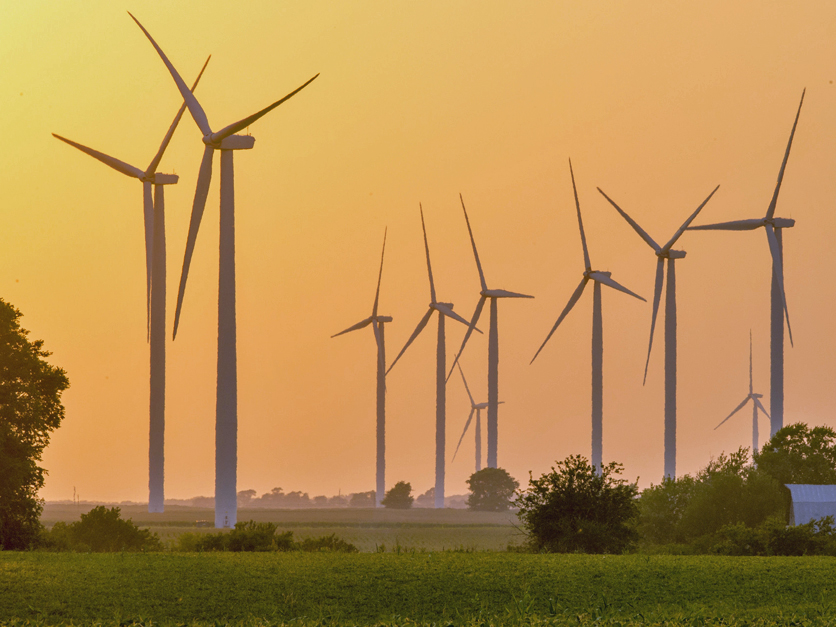The U.S. wind power industry closed 2017 strong, with 29 new wind farms commissioned in the last three months of the year, providing 4,125 megawatts of power, according to the U.S. Wind Industry Fourth Quarter 2017 Market Report. That brought new capacity for 2017 to 7,017 MW, representing $11 billion in new investment.
The wind industry’s growth should continue in 2018 and beyond. Wind farms under construction or in advanced development will bring a total of 28,668 MW, a 34 percent increase compared to the end of 2016.
“Wind delivered big results for the U.S. economy in 2017. Building new wind farms keeps American factory and construction workers busy, while breathing new life into farming and ranching communities,” said Tom Kiernan, CEO of the American Wind Energy Association (AWEA). “This American success story will continue, with the wind project construction and advanced development pipeline four times greater than the amount installed in 2017. That means tens of billions in additional infrastructure investment is on its way to the United States of America.”
There are now 89,077 MW of wind power installed across 41 states, enough to power 26 million American homes, AWEA says.
Texas, the national leader for installed wind capacity, added the most capacity in the quarter, 1,179 MW. Oklahoma installed 851 megawatts, followed by Iowa (334 MW). Oklahoma,with 7,495 of cumulative installed capacity, has now surpassed Iowa (7,308 MW) for second place. Rounding out the top five states for new wind capacity in the quarter were Illinois (306 MW) and Missouri.] (300 MW).
New long-term contracts signed for wind energy, known as power purchase agreements (PPAs), totaled 710 MW during the fourth quarter and 5,496 MW for the year, a higher PPA volume than any year since 2013. All of the new PPAs in the fourth quarter were signed by non-utility customers, including first-time buyer Bay Area Rapid Transit, as well as repeat customers Google Energy, Facebook and Digital Realty. Non-utility customers have become a large and steady source of demand for wind power, AWEA says, but utilities continued to be the biggest overall customers, signing roughly 60 percent of the contracted wind capacity in 2017.
Performance-boosting technological improvements spurred an increase in partial wind farm repowerings in 2017. In total, the U.S. wind industry completed 2,136 MW of partial repowerings across 15 project phases during 2017. Partial repowering activity is expected to accelerate in the near term.
Momentum to scale up the offshore wind industry continued to build in 2017. There are now five offshore wind currently in advanced development, representing over 490 MW of future wind capacity. In the fourth quarter, MHI Vestas invested $35 million in a testing facility at Clemson University in South Carolina for its 9.5 megawatt offshore turbine, one of the biggest in the world. Just over a year has passed since the Block Island Wind Farm, America’s first offshore wind project, began operating. Its five turbines are delivering lower electricity rates, better quality electricity, increased tourism, and high-speed internet to Block Island.
State and federal policy remain critical factors as the offshore wind industry seeks the scale needed to grow a domestic supply chain and further cut costs. Maryland, Massachusetts, New Jersey and New York have advanced nation-leading policies as they compete for the first large-scale offshore wind project. At the federal level, the Department of the Interior’s decision to allow design envelope planning for offshore wind projects is expected to streamline= the permitting process and allow greater flexibility for developers.
#30


